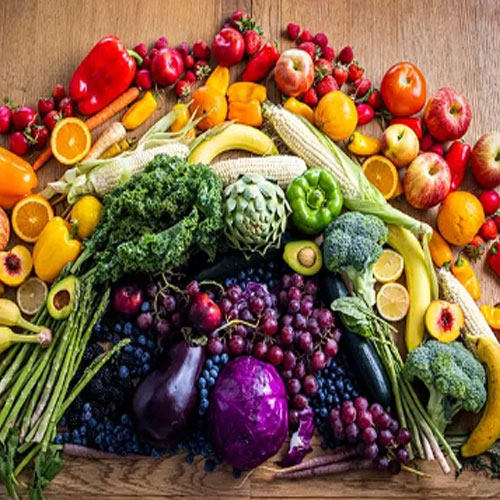Phone: +91-9890481729

Fruits and vegetables are both essential components of a healthy diet. They provide a wide range of nutrients, including vitamins, minerals, fiber, and antioxidants, which are important for overall health and well-being. While fruits and vegetables are distinct categories of plant-based foods, they complement each other in terms of nutritional value and offer various benefits when consumed together.
Here are some key points about fruits and vegetables:
1. Nutritional Value: Fruits and vegetables are nutrient-dense foods that offer a host of health benefits. Fruits are generally rich in vitamins, particularly vitamin C and vitamin A, while vegetables provide a broader range of vitamins and minerals, including potassium, magnesium, and folate. Both fruits and vegetables contain dietary fiber, which aids in digestion and helps maintain a healthy digestive system.
2. Antioxidants: Both fruits and vegetables are excellent sources of antioxidants, which help protect the body against cellular damage caused by free radicals. Antioxidants, such as vitamin C, vitamin E, and various phytochemicals, are more abundant in colorful fruits and vegetables. They play a vital role in reducing the risk of chronic diseases, including heart disease, cancer, and neurodegenerative disorders.
3. Fiber Content: Both fruits and vegetables are high in dietary fiber, which is important for digestive health and helps regulate blood sugar levels. Fiber also contributes to a feeling of fullness, aiding in weight management. Fruits and vegetables with edible skins or peels, such as apples, pears, and cucumbers, are particularly rich in fiber.
4. Disease Prevention: The consumption of a wide variety of fruits and vegetables has been linked to a lower risk of chronic diseases. Regular intake of these plant-based foods is associated with a reduced risk of heart disease, stroke, certain types of cancer, and age-related macular degeneration. The combination of their nutrient content, antioxidants, and fiber contributes to these protective effects.
5. Culinary Uses: Fruits and vegetables offer a multitude of culinary possibilities. They can be enjoyed raw as snacks or added to salads, smoothies, or yogurt. They can be cooked through methods such as steaming, roasting, sautéing, or grilling, and used in various recipes including soups, stir-fries, casseroles, and side dishes. Their versatility allows for endless combinations and flavors.
6. Seasonality: Both fruits and vegetables have seasons of peak freshness and availability. Consuming them when they are in season ensures better flavor, nutritional content, and often lower prices. It is beneficial to explore local farmers' markets or community-supported agriculture (CSA) programs to access a wide variety of seasonal fruits and vegetables.
To maximize the nutritional benefits, it is recommended to consume a variety of fruits and vegetables in different colors, as this ensures a broader range of nutrients and antioxidants. Aim to incorporate them into your daily meals and snacks, and consider experimenting with new recipes and combinations to enjoy the diverse flavors and health benefits they offer.
Quick Enquiry
Copyright © 2023 Swojas Exports| All Rights Reserved. Website Designed & Promoted by Web2Export

